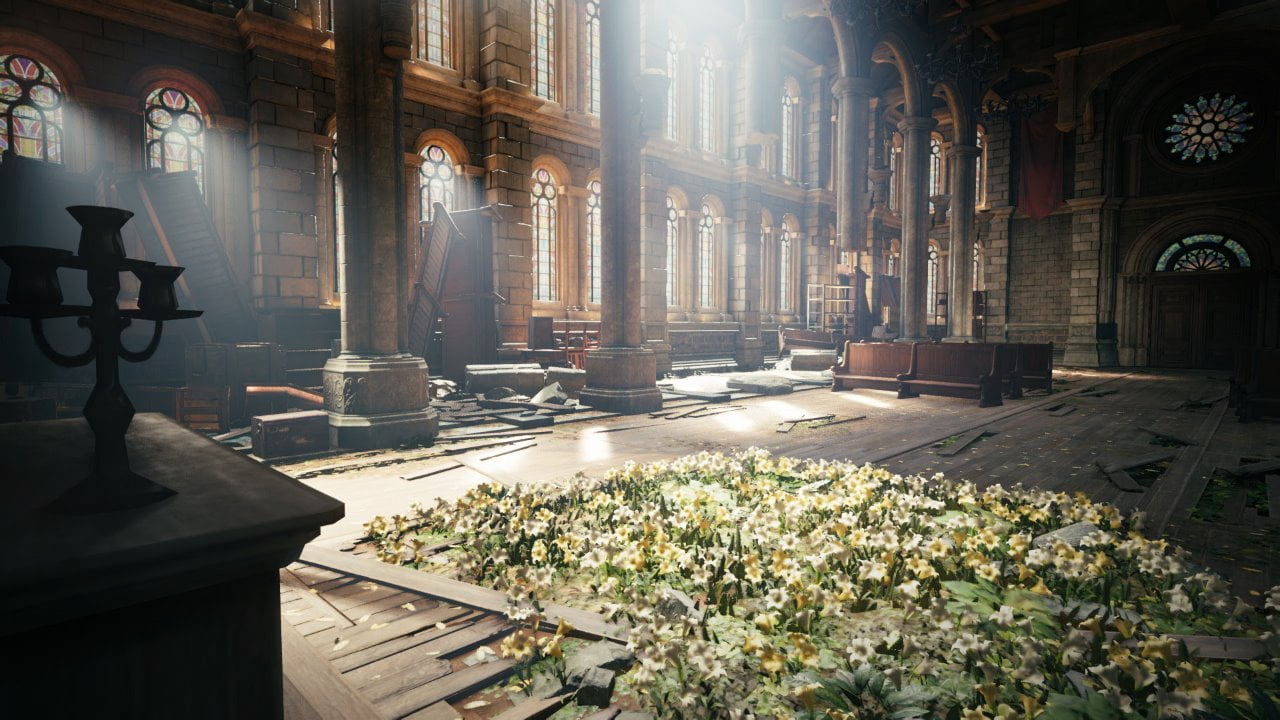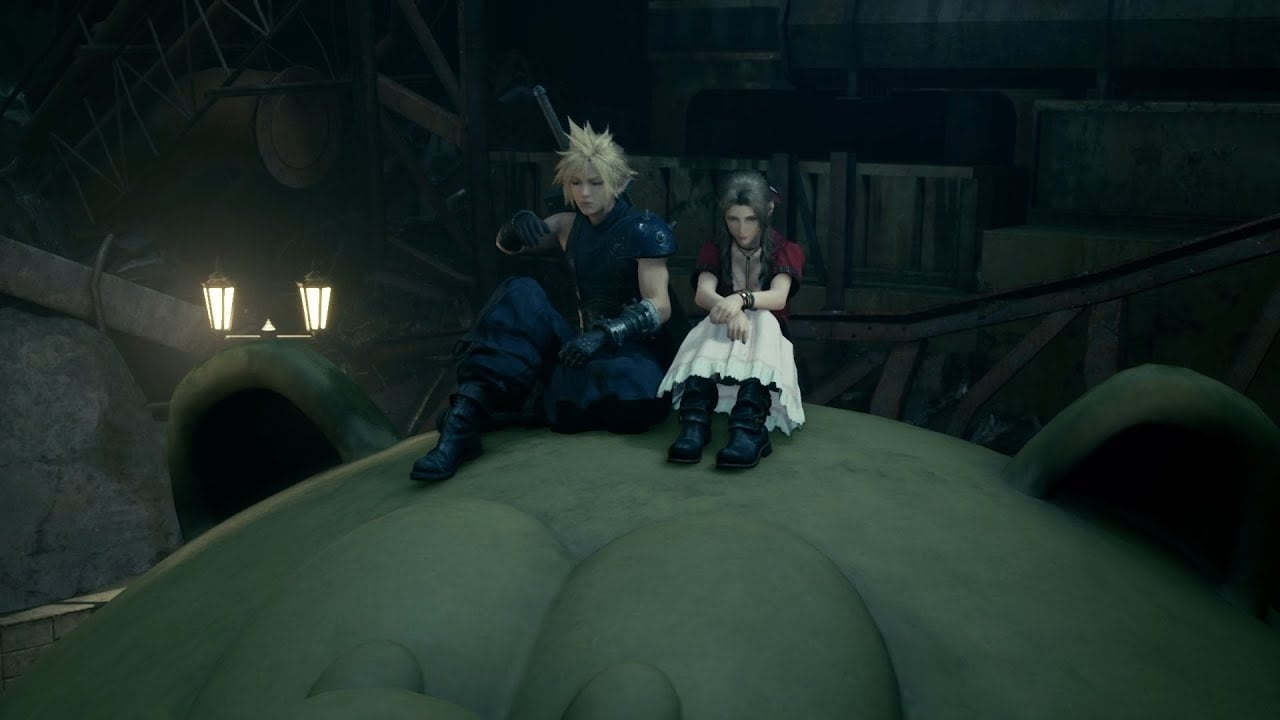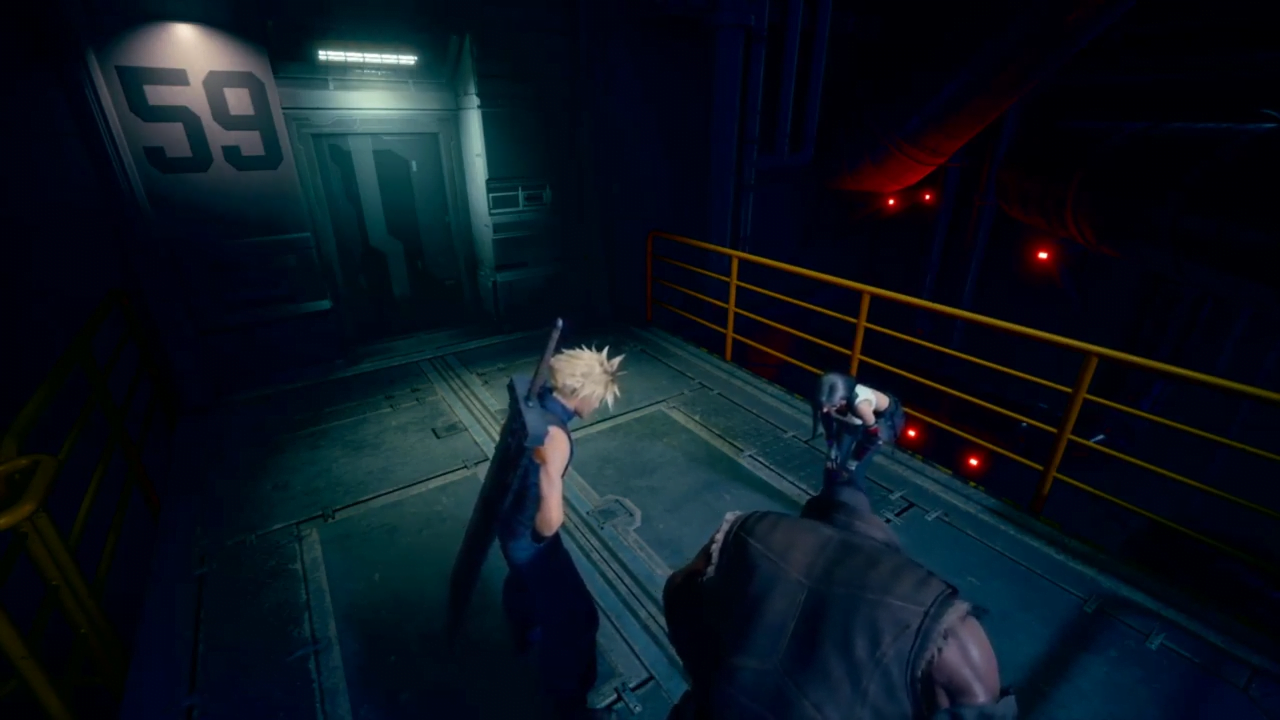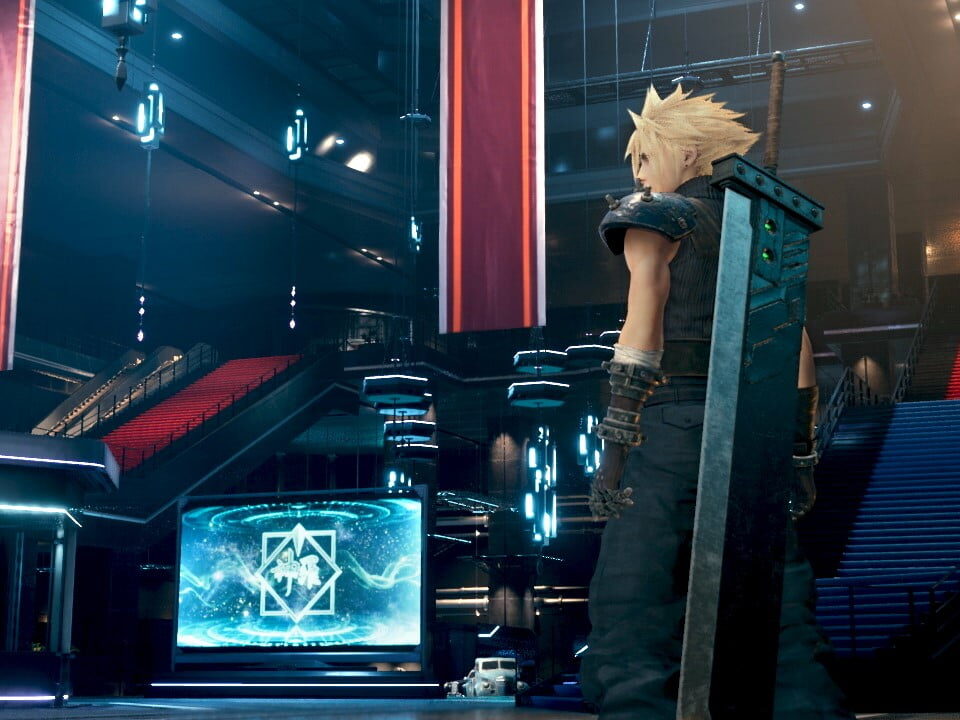The Final Fantasy VII Remake proves that it is the little things that matter most.
When the Final Fantasy VII Remake was announced, I, like everyone else, was worried that it wouldn’t be faithful to the original. That game is so formative for so many, but it was hard to see how the game’s… more unusual moments would translate into a hyper-realistic, AAA video game in 2020.
Those fears doubled with Tetsuya Nomura at the helm, though he did manage to resist the urge to rip up the script completely. Yes, there’s the overall fleshing out and the baffling ending, but it was still a surprise just how faithful it is to the original, while also borrowing from the best of Final Fantasy games over the years.
Because the Final Fantasy VII Remake survived Nomura’s tinkering (relatively) unscathed, it means so many of the original’s original beats were recreated. The intro, the train, the station, the first reactor – it felt reassuring, like coming home. From there, the game’s original seven- or eight-hour runtime was spread, padded, and punctuated by new details and new sidequests.
Thankfully, the game’s best bit – I’d argue, my favourite moment in gaming – survived the hand of Nomura. But which bit is that, exactly?
Spoiler warning: This article will contain general spoilers for Final Fantasy VII, original variant and Remake. Continue at your own risk.

How do you pick a favourite?
Final Fantasy VII is a game that features so many amazing memories. But the Remake only focuses on Midgar, so it can’t be anything from Junon, The Gold Saucer, Nibelheim, or the City of the Ancients. Even so, Midgar still gives us so many brilliant and memorable moments and set pieces to choose from.
Maybe we’re talking about the bit from Mako Reactor 5, where Cloud falls from the plate into the Sector 5 slum church and is reunited with the flower girl?
Or perhaps it’s Wall Market? From the medicinal fetch quest to the gym minigames to Cloud’s transformation into a beautiful young woman for his appointment with Don Corneo; it’s all in there, rendered in surprising detail for modern audiences.
If you’re partial to heartbreaking moments, then the attempt to save the Sector 7 slum pillar from Shinra and the Turks – with the loss of Biggs and Jessie – has got to be up there. The surprise, zero-context introduction of Cait Sith might have spoiled that one slightly in the Remake, but when Cloud, Barret and Tifa look over the ruins of Sector 7? Goosebumps.
But it’s in the quieter moments that the Final Fantasy VII Remake truly shines. The game’s not without its flaws – it’s padded to the gills with filler and, as I said before, the ending is bemusing – but anything that offers an opportunity to spend 30-40 hours more with this rag-tag bunch of weirdos? With Tifa, Barret, the Avalanche crew, Red XIII, and of course, Aerith? That’s worth every overdone sequence, irritating new character, or sidequest misstep. It’s even worth that baffling ending.
The next question, then, is which of these quieter, low-key moments is the standout?

A quiet place
Is it not the fall into Aerith’s church, but the jaunt across the rooftops, the bonding time spent between the mercenary-turned-bodyguard and his new charge? Or the walk between Aerith’s home in Sector 5 and the park near the entrance to Sector 7? I’ve waited more than 20 years to ride that Moogle slide and, let me tell you, I went up and down it dozens of times.
Perhaps you enjoyed spending more time bonding with your childhood friend, Tifa, around the Sector 7 slums? Or that any time spent with both Aerith and Tifa in the party this time around felt like a sisterhood, a formidable team, rather than two girls vying for Cloud’s attention? Speaking of Cloud’s attention, who didn’t love hanging out with Jessie (and the rest of the team Avalanche dorks) in the Final Fantasy VII Remake, learning about three-dimensional motivations beyond simply saving the planet because it’s the right thing to do? And then there’s Barret, who – when he’s not shouting and raging – gets some of the best lines in the game.
But the best bit in the Final Fantasy VII Remake – again, probably my favourite moment in gaming – comes during the infiltration of the Shinra Tower to rescue Aerith, in chapter 16, The Belly of the Beast. Again, that doesn’t entirely narrow it down! Meeting Red XIII and our heroes finding out that he can speak was a treat, even though we all knew it was coming. The infiltration sections, complete with support from the Mayor (THE BEST!) are also great fun, including spying on the boardroom from the gents’ toilets.
And a few new additions in the Final Fantasy VII Remake – sneaking into the basement on the back of a Shinra truck; Barret’s conversation with President Shinra before his demise; brazenly strolling through the Shinra company museum tour, with so much side-eye from our heroes – are also brilliantly realised.
My favourite bit, though? It’s entirely optional. You don’t even have to do it. In fact, you could argue that it’s not even the best way to approach the situation. Barret wants to take the elevators and bust as many Shinra heads as possible in a full-frontal assault. Tifa, meanwhile, would rather they climbed the back stairs. This is a rescue mission, after all, so getting in and out quietly would be optimal. It’s up to Cloud, the player, to decide which route they’ll take.
If you take the elevators, you’ll get in a bunch of fights as Shinra security officers get on the lift at various floors. That means more experience points, AP for Materia, items to steal, and more opportunities for technical character progression. It’s the smart choice from a ludology perspective.
If you opt to take the stairs? There are no fights. There are no experience points or items. You won’t run into a single soul. You might even argue it’s boring. It’s just Cloud, Barret and Tifa, and 59 flights of stairs. But it represents one of the best opportunities for narrative character progression in the game, as you rarely get to spend this much time with the characters outside of combat or big, important missions. (Or unimportant side missions and filler, for that matter.)
It’s just such a rare treat, a palette cleanser of a sequence, between the devastation of Sector 7 and the horrors that are to come atop the Shinra tower.
The “bottle episode” of video games
In the original Final Fantasy VII, taking the stairs takes around five minutes from bottom to top, including a couple of scene transitions. (They clearly couldn’t fit all 59 flights of stairs in play at once, whether that was a memory limitation, or a limitation on the vertical height of a scene.) In the Final Fantasy VII Remake, it’s nearly twice as long; I stopped the clock at about eight minutes and 39 seconds. You can’t have too much of a good thing, right?
In both variants, original and remake, Barret complains almost constantly, for the entire duration of the climb, which is understandable. Standing 197cm (or 6’6″) tall, he must weigh at least 140 kg (that’s around 310 lbs for the Americans) and also has a massive Gatling gun – which, in real life, weigh around 77 kg, or 170 lbs – in place of an arm. It’s a tough slog for an absolute unit, and he lets you know about it.
Tifa, meanwhile, remains upbeat about the whole thing. “Bright and positive” are literally the first words in her character description in the original game’s paper manual. And the Final Fantasy VII Remake finally gives Tifa her due on the stairs: she’s clearly in the best shape of the bunch, weighs probably half as much as Cloud – who weighs half as much again as Barret – and she romps to the top.
It’s in Cloud that we see the biggest difference in the Final Fantasy VII Remake, both on the stairs, and in general. In the original game, at this point, he’s still a bit of a knob, quite frankly. He’s still aloof and self-important and mercenary as when we first meet him. It takes 20 or 30 hours of playtime for him to warm up in the original, which, coincidentally, is how long you’ve been playing to get to this point in the remake.
So where Cloud once sprinted to the top of the stairs, passing Barret and Tifa without stopping for breath, snapping at them for complaining, he’s struggling here. He may have been infused with Mako, the sign of a Soldier, but he’s still lugging that enormous sword around with him. After the first dozen or so floors, the sprint button stops working. By the time he’s half-way, he’s moving no faster than Barret. He’s huffing and gasping, trudging to completion; it’s a humanising moment for a character who’s always felt like a robot.
Final Fantasy VII’s 59 flights of stairs are gaming’s version of one of those great bottle episodes of prestige TV, then, like Seinfeld’s The Chinese Restaurant, or Breaking Bad’s Fly. It’s something that’s rarely seen in video games, save for our own version of prestige telly; the likes of Uncharted, The Last of Us, and the 2018 reboot of God of War.

The imitation games
That’s not to say other games haven’t tried to replicate the effect of Final Fantasy VII’s staircase, but they tend to focus on different aspects of it. You could argue the wrong aspects.
The example most often cited is Metal Gear Solid 3’s ladder, a single climb that takes a little over two minutes and is completely unremarkable in every respect. It’s just rung after rung after rung, staring into a tedious, green-splashed environment. It doesn’t entertain the player or set the scene; in fact, I’d argue that Snake Eater’s ladder sequence isn’t exactly in the spirit of the thing. Instead, it feels like a middle finger from series creator Hideo Kojima. Will players think he’s screwing with them? Will they abandon the ladder if they think it never ends?
Unfortunately, two minutes isn’t long enough to put the majority of players off the scent or to really reward those who stick with it, but you can see why – with Psycho Mantis’ port-swapping antics from the first game – players thought Kojima was messing with them. It’s a sign that the gaming world wasn’t full of meaningful ARGs in 2004, when Metal Gear Solid 3 released, that players spoke about this tedious ladder climb so much. It’s really not worth all the discussion it generated, or to be remembered so fondly.
And then, of course, there’s Shadow of the Colossus, a game that builds its entire experience out of the liminal spaces between the more traditional, “gameplay” moments. Team Ico hits its pacing perfectly but, unlike Final Fantasy VII, it’s a painfully lonely, isolated experience. Shadow of the Colossus is brilliant and its use of lengthy traversal is legendary, but I wouldn’t go so far as to say I enjoyed it, unlike like Final Fantasy VII’s giant staircase.
A far better example comes in Half-Life’s opening where, instead of a cut-scene, players are literally placed on the rails, in the shoes of Gordon Freeman’s commute to work on the underground rail system to the Black Mesa research facility. Some players argued at the time that it was boring – some still do; incorrectly, I might add – but as a piece of world-building, it’s a masterstroke. It shows you just enough of the world to pique your interest and in a way that makes sure you see it all, while finding a clever means to be sure it never wrests control from the player. Half-Life’s intro is the standard immersive sims have been following ever since, and its commitment to tedium – with just enough ancillary information and character – to keep the player interested.
But really, it’s Final Fantasy VII’s 59 flights of stairs that win out. And with its more than faithful reproduction in the Final Fantasy VII Remake, that doubles down on the original? The team behind the remake, helmed by Tetsuya Nomura, has proved that they know what’s important. And, crucially, that they know how to be faithful to the tiniest minutiae of the source material.
It may only be 59 flights of stairs, but in the end, it’s the little details that really matter.
Enjoyed this long read? You should support Thumbsticks on Patreon or buy us a coffee to enable more of it.






